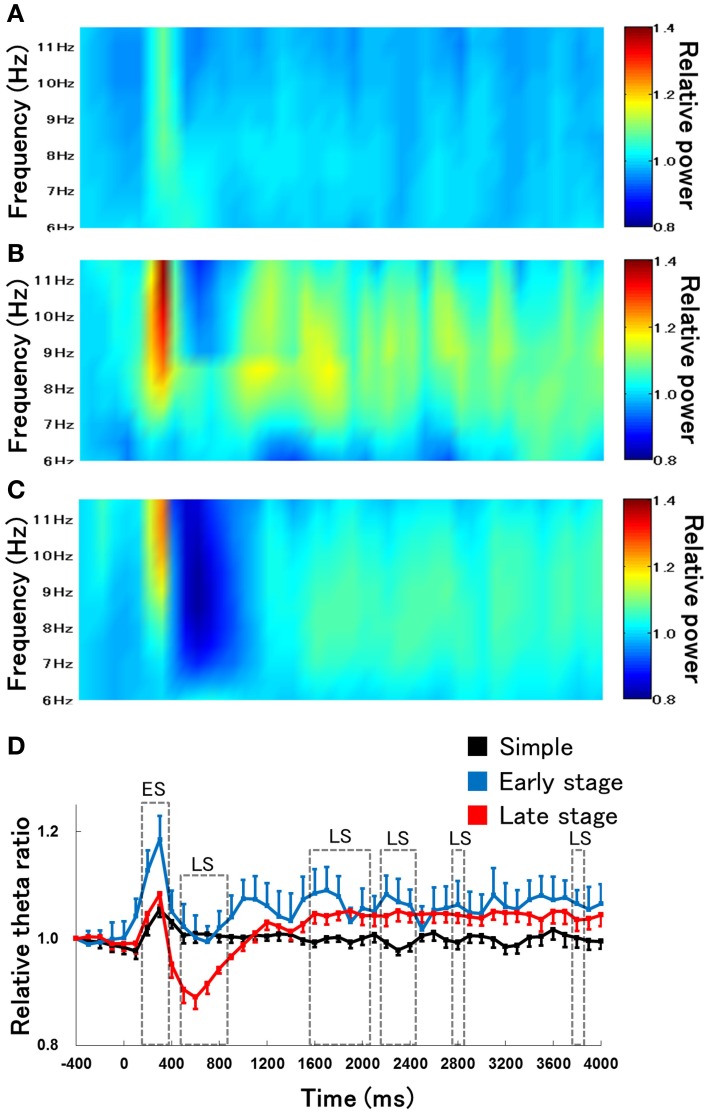Figure 5.
The relative change in hippocampal theta power during non-RFTs of the retention test for the simple discrimination task (A), the early learning stage (B), and the late learning stage (C) of the FN task. The 0-ms period indicates the onset of the stimulus presentation. The X-axis is time (ms) and the Y-axis is frequency (Hz) in panels (A–C). The period was divided into 45 sub-periods of 100 ms each. The mean hippocampal theta power from 500 to 400 ms before the stimulus onset was counted as the −400-ms period (no stimuli were present and no rats pressed the lever during this period), and the relative theta power calculated for each period was normalized to that of the −400-ms period (relative theta power of each period = theta power of each period/theta power at the −400-ms period). Panel (D) depicts the mean hippocampal theta power between 6 and 12 Hz (Simple: simple discrimination task; Early stage: early learning stage of the FN task; Late stage: late learning stage of the FN task). The “ES” indicates a significant difference between the early learning stage of the FN task and the retention test for the simple discrimination task (ES: p < 0.05), “EL” indicates a significant difference between the early learning stage and the late learning stage of the FN task (EL: p < 0.05), and “LS” indicates a significant difference between the late learning stage of the FN task and the retention test for the simple discrimination task (LS: p < 0.05). Error bars indicate s.e.m.

